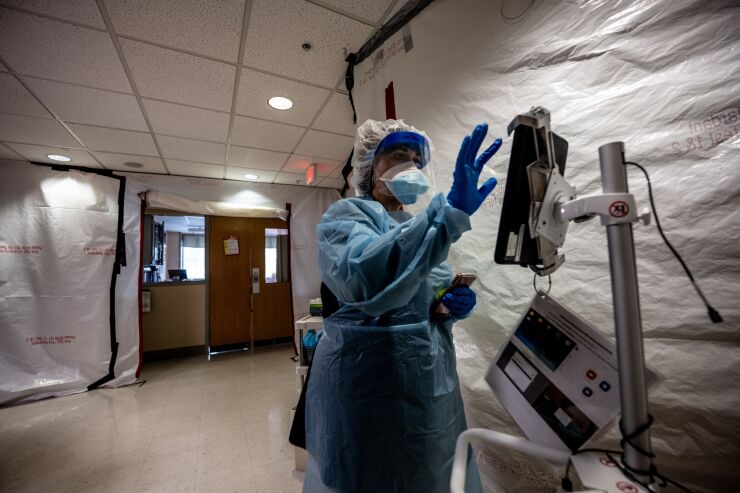“We think we have another tough year ahead of us,” Fitch Senior Director Kevin Holloran said during a webinar.
Despite some positives, such as an increase in demand, labor costs remain a major problem for nonprofit healthcare, Holloran said.
Bloomberg News
The outlook on the sector is negative, said S&P Senior Director Suzie Desai in a separate webinar, as labor expense pressures remain, stressing balance sheets, and 24% of rated credits in the sector carry negative outlooks.
Currently, 11 credits in the sector have negative outlooks from Fitch and five have positive ones.
The three major metrics for S&P-rated healthcare credits slid in last three years (with 2013 data being through Oct. 31). Median days cash on hand dropped from 250 in 2021 to 209.5 in 2022 and 183.4 in 2023. Median operating margin fell from 2.8% in 2021 to 0.1% in 2022 and -0.2% in 2023. Finally, median maximum annual debt service coverage slipped from 5.4 times in 2021 to 3.3 times in 2022 and 2.8 times in 2023.
Fitch also said its rated credits’ operating margin declined: 2.8% in 2021, about 0.3% in 2022, and 0.2% in 2023.
Over the long term, healthcare entities need a 3% operating margin to pay bondholders, invest in capital expenditures, and “sock away a little for a war chest,” Holloran said, making current margins not sustainable in the long run.
However, Holloran said, Kaufman Hall data on operating margins show they have been generally increasing over the past year, based on a much larger group of healthcare providers. The sector’s average operating margin was 1.3% in October, which he called hopeful.
Healthcare managers reported some “cautious optimism” about improvement in the labor situation, Desai said. The sector will increase “virtual nursing” and artificial intelligence to lower costs, which should help margins improve in 2024, she said.
The sector is expected to increase its bond sales this year, Desai said.
“While we remain concerned about a second year of debt service covenant breaches this year — specifically as it is the second year and any event of default is a serious event no matter how small — we do not expect widespread calls for immediate acceleration of payment by bondholders,” Holloran told The Bond Buyer after the webinar.
The aging population also concerns Holloran, since more people will be using Medicare, and fewer taxpayers paying in.
Moody’s
